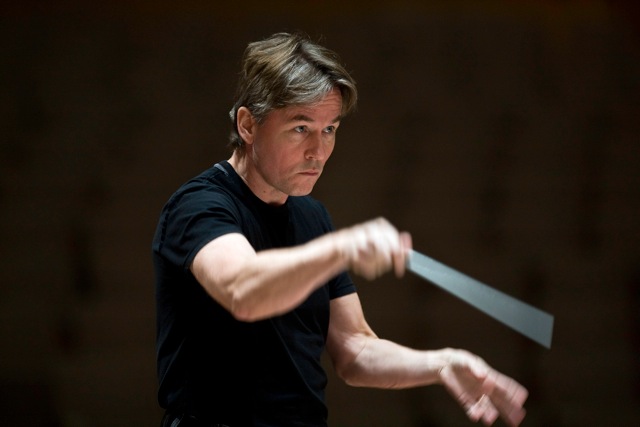
Esa-Pekka Salonen, a Finnish magician at the New World Symphony
By Sebastian Spreng, Visual Artist and Classical Music Writer
Nowadays few remember Esa-Pekka Salonen’s notable last appearance in Miami. It was March 1999 at the helm of his (then) orchestra (the Los Angeles Philharmonic Orchestra) in the cavernous Dade County Auditorium for Judy Drucker’s concert series. At that time, the constant parade of first-class orchestras and conductors made up for the shortcomings of the antiquated hall. Today, it seems the opposite. Miami can be proud of its state-of-the-art auditoriums but, alas, has fewer visiting classical top-orchestras and soloists. Salonen returned to Miami this month to conduct, paradoxically, the very same Stravinsky opus he conducted 13 years ago. This time with the New World Symphony at the orchestra’s new venue.
At 54, the Finnish conductor and composer – a bright star of the musical world who will carry the Olympic torch in the upcoming London Games– retains his youthful looks and undeniable magnetism. The concert marked one of the most satisfying evenings of the season. Even the auditorium’s extraordinary (though sometimes elusive) acoustics seemed to cooperate, perhaps due to the space’s similarities to the Gehry-designed concert hall in Los Angeles that Salonen knows better than anyone else.
Beyond the artistic results, the sound spectrum and mastery of dynamic range Salonen displayed was remarkable. The pianissimos were as stunning as the fortissimos, which never reached a deafening level and produced a completely rounded sound picture.
In Debussy’s Prelude to the Afternoon of a Faun, Salonen elicited a limpid and terse response from the orchestra, with a miraculous differentiation of sound levels. His ethereal, at times clinical, vision did not lack the requisite ardor and sensuality. On the contrary, he balanced every aspect, without a baton, juggling them like a magician.
The novelty of the program was Nyx, a 2o-minute-long. one-movement work that Salonen composed in 2011, the year he won the prestigious Grawemeyer Award. Named after the Greek goddess of the night, it is a masterful piece of orchestration that tests musicians’ skills. An exercise in counterpoint between two fundamental ideas – light and darkness – that continuously intertwine, compete and challenge each other, but never meet. The piece begins with a dramatic horn fanfare that sets the tone for the whole composition. Clarinets, oboes, harp, gongs, celesta and strings have essential and intricate roles, particularly the firsts. Ominous and painstakingly layered with translucent blacks on blacks that enables the audience to look through the prism of creation with sounds, the piece prepared the audience for a complete version of The Firebird that gave the impression of mixing the best of the two previous musical worlds.
Once more, as with the Debussy, Salonen gave such a fresh rendition of the century-old piece that one would have thought it was its premiere. The rapport Salonen obtained with the young “America’s Orchestral Academy” was notable, enabling him to take the the orchestra to the level of its most venerable older siblings. Applying distinctive chromatic touches and powerful images, Salonen served up a sound feast that navigated among extreme contrasts, and from which Stravinsky’s Russian spirit emerged victorious. In the stealthy murmur of the strings, the gravity of the brass and the final explosion, you could hear Mussorgsky’s legacy, both distant and close, and that of Salonen’s countryman, Sibelius.
A well deserved standing ovation from an audience usually somewhat too prone to applause rewarded conductor and orchestra. It was another goal scored by Finland, a breeding ground for great conductors that last week gave us the excellent Osmo Vänskä in the same venue. It was evident that on the eve of Easter, the magician Salonen pulled three superb rabbits out of his hat. Chapeau!
Recent Content
-
Artsarticle ·
-
Artsarticle ·
-
Artsarticle ·
